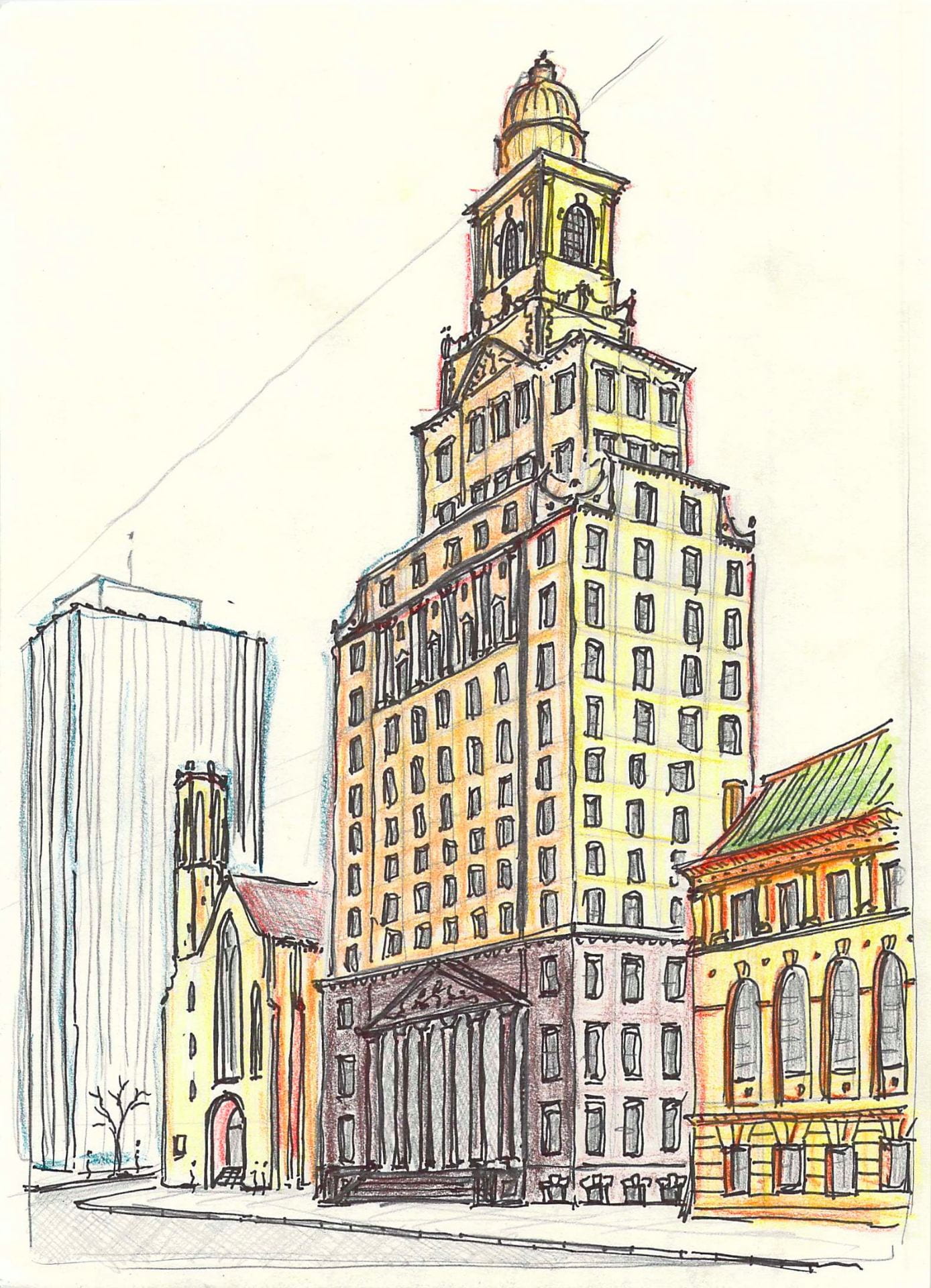
Washington Park in Downtown Newark
.
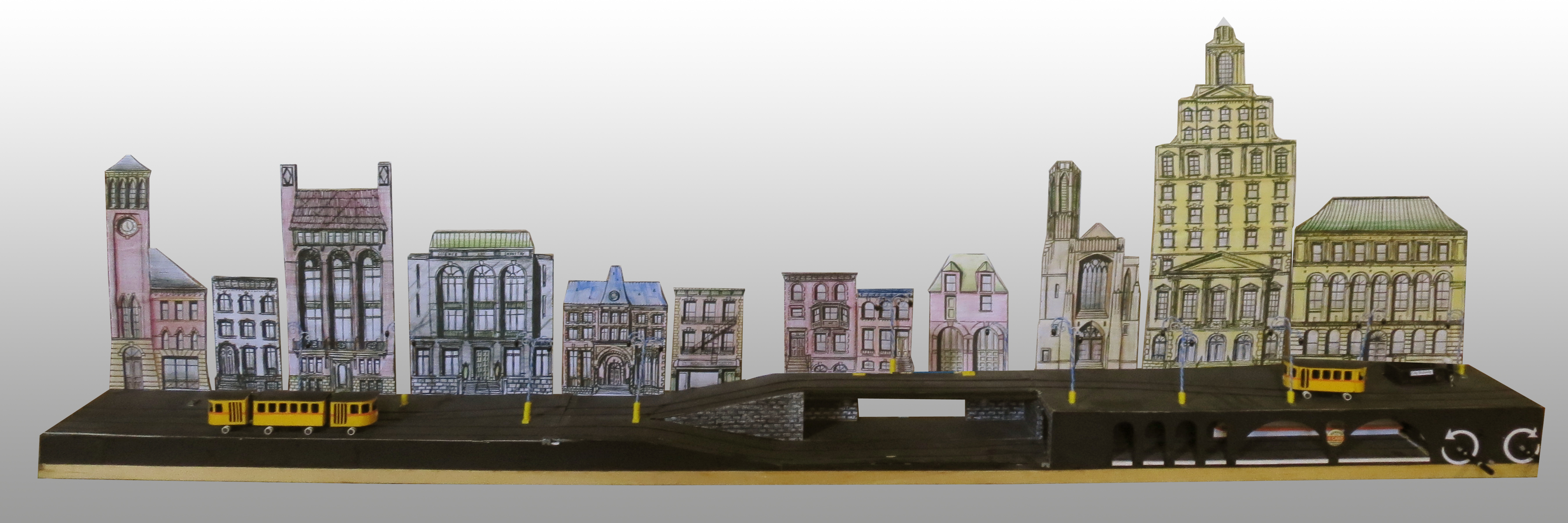 Left to right: Broad Street Station, Polhemus House, YWCA Building, Newark Museum, Ballantine House,
Left to right: Broad Street Station, Polhemus House, YWCA Building, Newark Museum, Ballantine House,
Second Presbyterian Church, American Insurance Company, Newark Public Library
.
When I examine old pictures of my neighborhood in Newark’s archives, I realize that so much of my city’s built environment has vanished. This trend will continue, as it does in most cities where old buildings outlive their use. If not in the form of my city’s physical destruction, this loss is in the form of my gradual loss of childhood memories. To reconcile this, I built the below model as my own souvenir. This keepsake will forever remind me of my Newark identity.
The landmarks depicted are selected from my neighborhood and include my childhood home. The buildings are drawn with ink and pastel on thick paper, which is then cutout to form a two-dimensional silhouette. The trolleys travel back and forth down the street and are magnetically operated by a crank and hidden string beneath the street. The tracks guide the trains up, down, and into the tunnel. These trolleys are modeled on those that used to exist in Newark, long before my time here.
Perhaps, this models presents a more romanticized and idealized Newark than the city that actually exists.
.
.

Subway Entrance

Subway Station

Newark Public Library

Newark Museum

Newsstand

Newark Museum

James Street Ensemble

Presbyterian Church / Broad St. Station

American Insurance / Public Library





















































































 Left to right: Broad Street Station, Polhemus House, YWCA Building, Newark Museum, Ballantine House,
Left to right: Broad Street Station, Polhemus House, YWCA Building, Newark Museum, Ballantine House,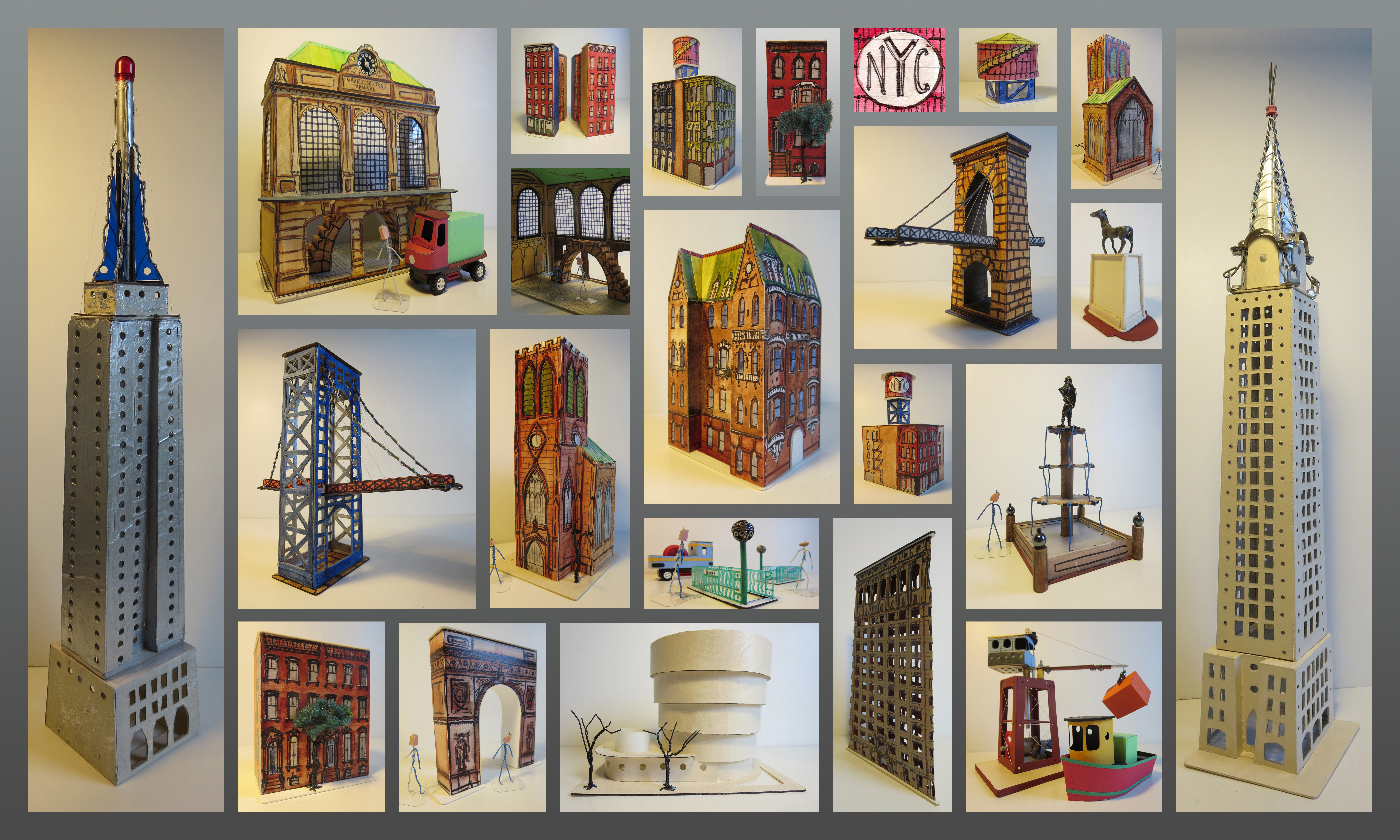






































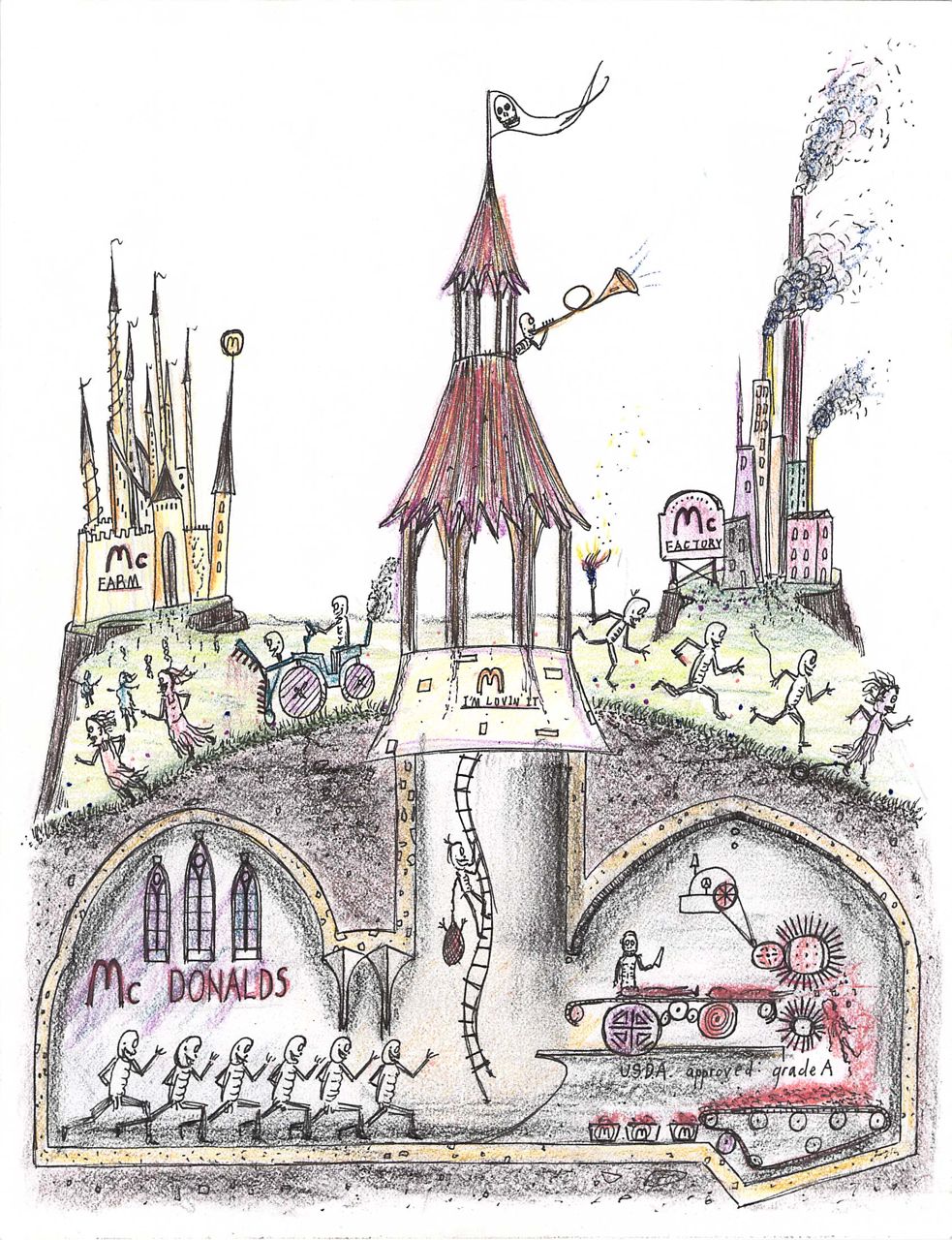
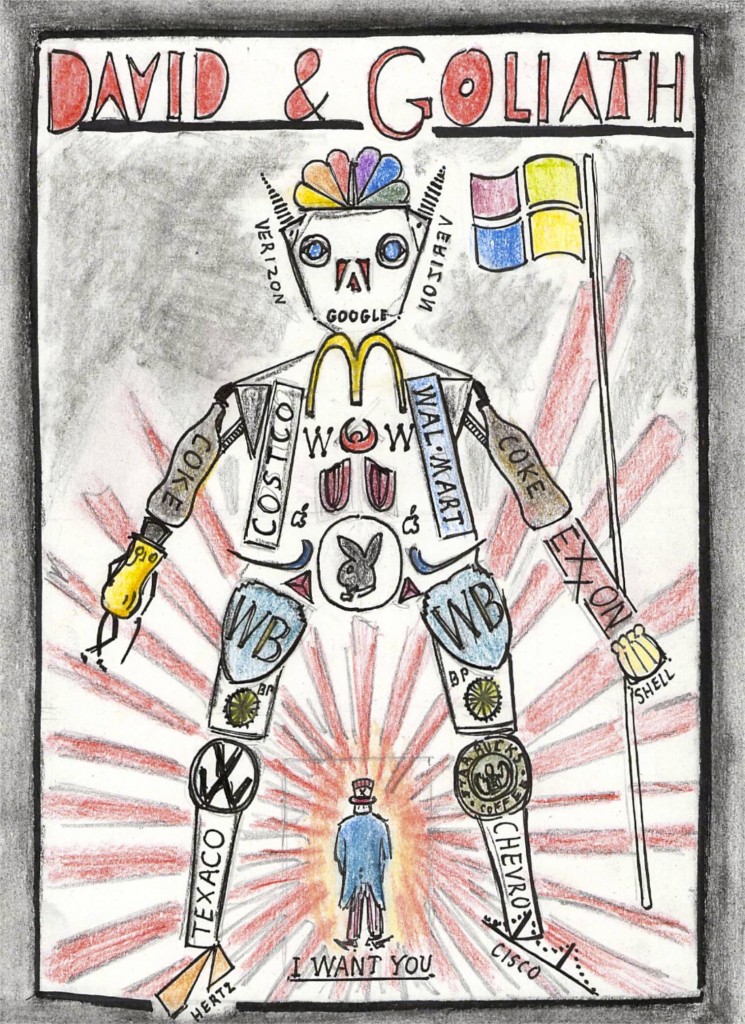 A Goliath made of corporate logos fights a tiny David dressed as Uncle Sam.
A Goliath made of corporate logos fights a tiny David dressed as Uncle Sam.





